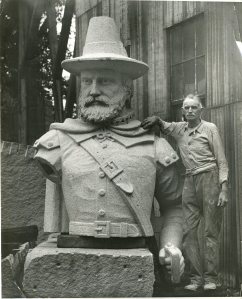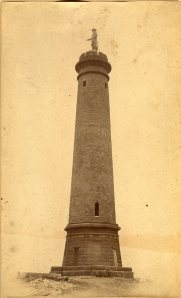Carolyn Ravenscroft, Archivist
The survival rate of triplets in the mid-19th century was not high – neither for mother nor children. A home-birth with the assistance of the local doctor was dicey at best. Medicine of the day was also woefully inadequate to assist these undersized or premature babies once they were born. So, it is surprising that Catherine Drew Delano (1833-1919) was able to produce three healthy babies on a cold winter’s day in January, 1868. The children – two girls and a boy – were Caroline S. Delano (1868-1955), Grace T. Delano (1868-1935) and Benjamin Franklin Delano (1868-1920). What makes their coming into the world even more special, are the four photographs that follow them from infancy to their teenage years. A remarkable record of their early life.
The triplets were born in Chelsea, MA but they are from Duxbury stock and spent much of their lives here. Their father, Winslow T. Delano, was the son of Capt. Samuel Delano and the nephew of Capt. Amasa Delano. After a short stint following the California Gold Rush, Winslow returned east and entered is brother’s shipbuilding firm on Lincoln’s Wharf in Boston – B. F. Delano & Co. In 1855 he married Catherine D. Winslow of Duxbury. Two sets of twins came in quick succession – Fanny and Emily in 1857 and George and Arthur in 1859. In each of these cases, a twin sadly died within three months. When the triplets arrived, therefore, they were greeted not only by their grateful parents, but also only two older siblings. But, in a cruel twist of fate, while the triplets thrived, it was their father who did not live past three months of their birth. On April 23, 1868 Winslow died of “softening of the brain.” This diagnosis could indicate a variety of causes, but it was most likely a cerebral hemorrhage. He was only 47 years old. Catherine was now the widowed mother of five young children.
The 1870 census shows the family having left Chelsea and living on St. George Street in Duxbury next to the home of Catherine’s parents – George Winslow and Hannah Drew Winslow. This move ensured that Catherine had the help of not only her mother and younger sister, Georgianna Winslow, but also of a number of aunts, cousins and friends. By 1880, however, the family had moved back to Boston and was living at 81 St. Botoloph Street. They divided their time between the city and the seaside, maintaining ownership of their St. George Street property throughout their lives. The Delanos were active in Duxbury’s civic and social affairs of the day – Caroline S. Delano, also called “Carrie,” was one of the founding members of the Duxbury Rural & Historical Society. Grace and Carrie never married and it does not appear that their brother did either – all are buried in their family’s plot in Duxbury’s Mayflower Cemetery.

![Delano Triplets, c. 1870 Photographer: M. Chandler [Marshfield, MA]](https://drewarchives.files.wordpress.com/2014/10/delano-triplets002.jpg?w=300&h=191)



